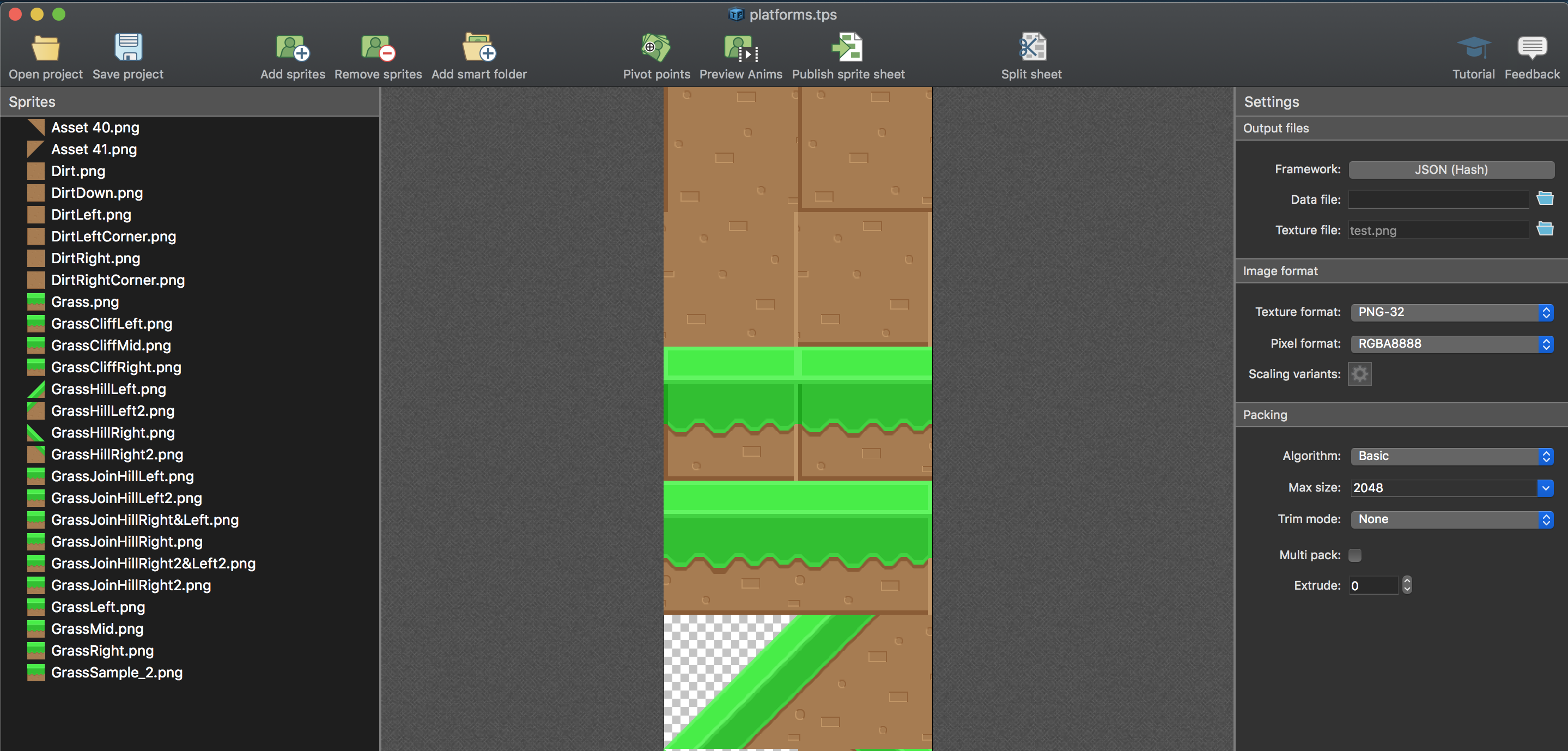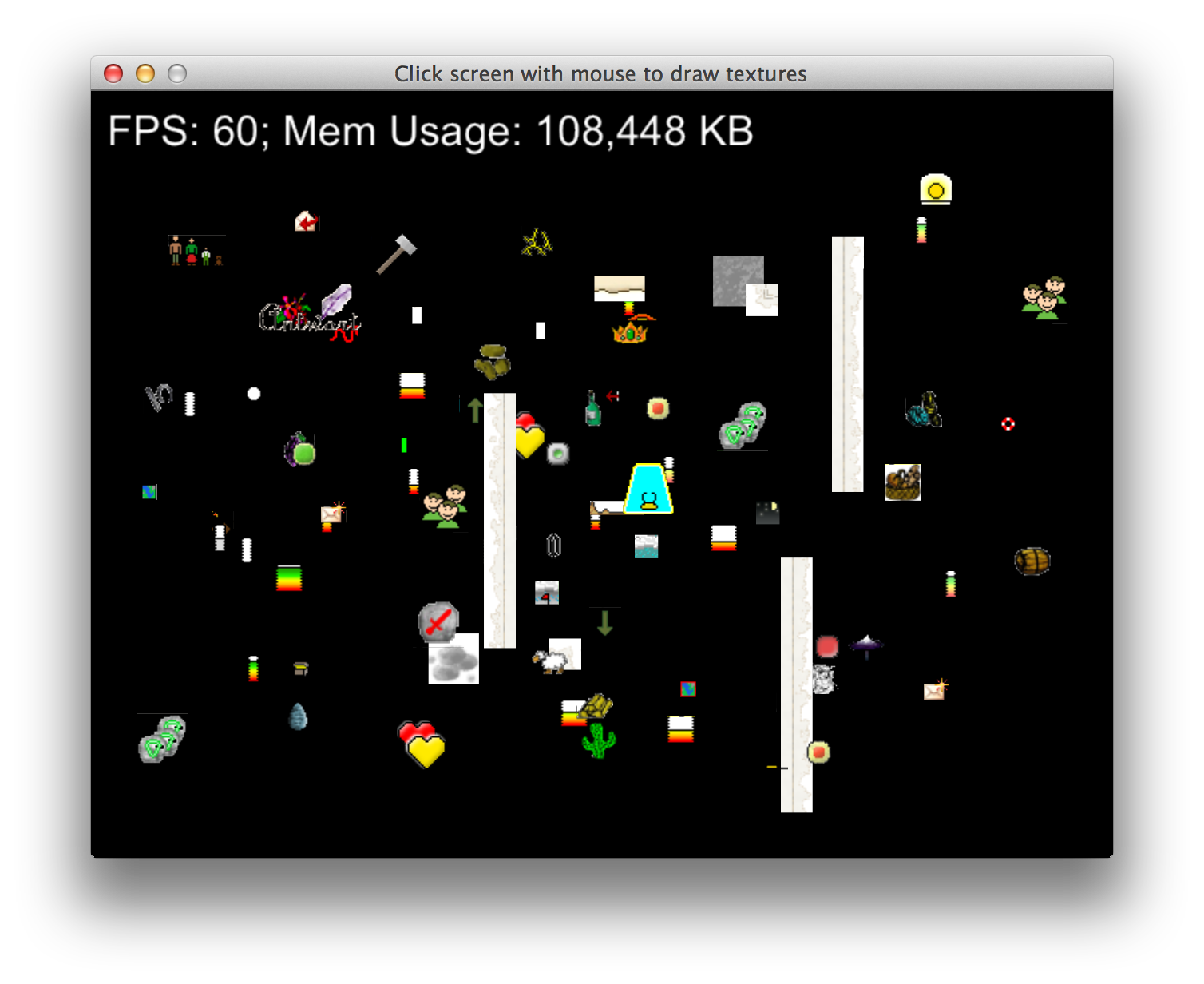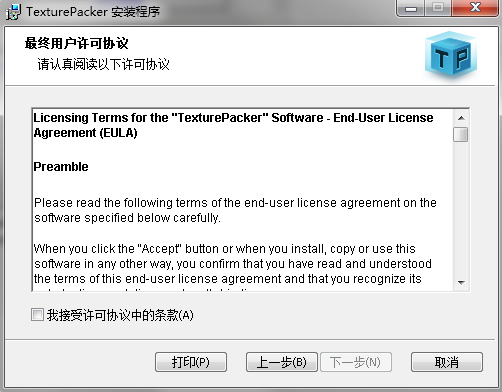

- #TEXTUREPACKER EXPORT TO JSON HOW TO#
- #TEXTUREPACKER EXPORT TO JSON CODE#
- #TEXTUREPACKER EXPORT TO JSON FREE#
addChild ( clampy ) įirst, we see the import statement. I will use named imports: import ) const clampy : Sprite = Sprite.

I feel that doing import * as PIXI from "pixi.js" so that I can go PIXI.Sprite, PIXI.Container, PIXI.Loader, etc, is silly and makes me feel clumsy.
#TEXTUREPACKER EXPORT TO JSON CODE#
But I must endure, adapt, overcome.Įnter Typescript: Typescript will force your hand to keep your code as strictly typed as possible, and if you need to use type coercion and really javascripty code, you must consciously choose to make the data type as any.Īs a nice bonus, you get intellisense on Visual Studio Code (which is Microsoft's fancy name for code auto-complete).

I hate the meme of truthy and falsy values. I'll be honest with you: I hate Javascript. It also will make a final build folder for you instead of you having to pluck manually files out of your project folder to get the uploadeable result of your hard work. It is a just-add-npm solution that sets you up with typescript, pixi.js and webpack. It goes from nothing to watching your code running with the least amount of configurations. It is the simplest boilerplate I could build.

In case you realize you have no idea what a bundler is or why you need one, worry not! I've created a base template project called pixi-hotwire.
#TEXTUREPACKER EXPORT TO JSON FREE#
(If you have a bit more experience in web development, feel free to tinker and try any bundler of your liking.) pixi-hotwire?
#TEXTUREPACKER EXPORT TO JSON HOW TO#
guide? course? tutorial? will use Typescript and it will be designed to work with pixi-hotwire, a boilerplate to get you started fast without the hassle of how to create and maintain a standard web project with a bundler. js file but in today's spooky fast world of javascript libraries, going commando ain't gonna cut it. Web development might have started with only a text editor and dumping code into a single. html file, oh boy I have bad news for you. If you came here expecting to write javascript between two tags in your. If you know any object-oriented programming you will be just fine. Git and some shell (console) experience will be good but not mandatory. I will assume you already know your way around code and object-oriented programming. This tutorial won't teach you to code from scratch. Let's get straight to teaching! Getting Started Before we even start. I assume that if you are here is because you already made your mind so I won't try to convince you. We could spend pages and pages discussing what PixiJS is and isn't, or if you should or shouldn't use it over other engines, frameworks, or libraries but I refuse to do so. PixiJS is an HTML5 Creation Engine and can be used to create beautiful digital content with the fastest, most flexible 2D WebGL renderer. This is a summary of the knowledge I have gathered along my career and I think is essential to get started making games and content with PixiJS. "When you wish to instruct, be brief" - Cicero


 0 kommentar(er)
0 kommentar(er)
